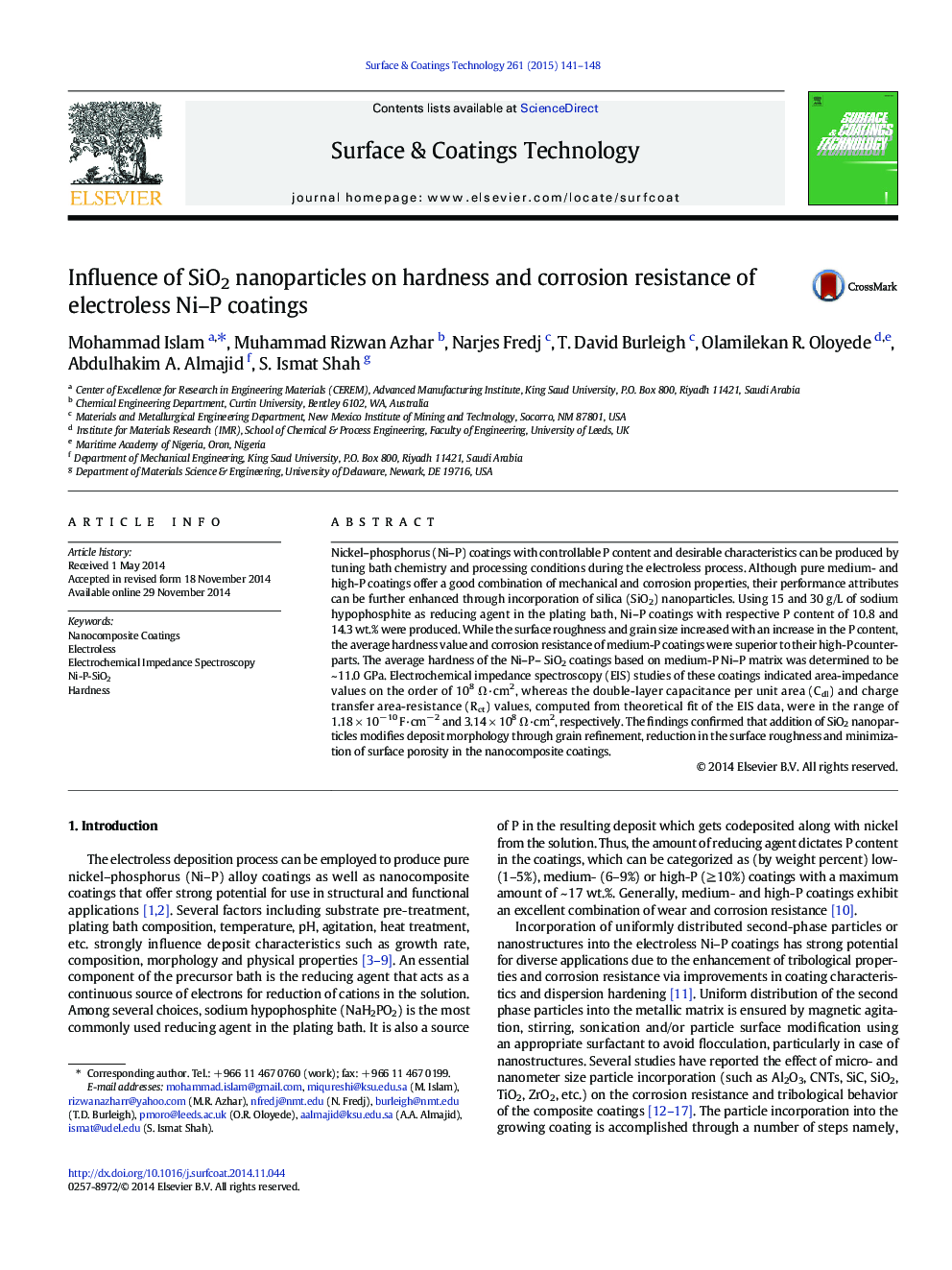| Article ID | Journal | Published Year | Pages | File Type |
|---|---|---|---|---|
| 1657295 | Surface and Coatings Technology | 2015 | 8 Pages |
Abstract
Nickel-phosphorus (Ni-P) coatings with controllable P content and desirable characteristics can be produced by tuning bath chemistry and processing conditions during the electroless process. Although pure medium- and high-P coatings offer a good combination of mechanical and corrosion properties, their performance attributes can be further enhanced through incorporation of silica (SiO2) nanoparticles. Using 15 and 30 g/L of sodium hypophosphite as reducing agent in the plating bath, Ni-P coatings with respective P content of 10.8 and 14.3 wt.% were produced. While the surface roughness and grain size increased with an increase in the P content, the average hardness value and corrosion resistance of medium-P coatings were superior to their high-P counterparts. The average hardness of the Ni-P- SiO2 coatings based on medium-P Ni-P matrix was determined to be ~ 11.0 GPa. Electrochemical impedance spectroscopy (EIS) studies of these coatings indicated area-impedance values on the order of 108 Ω·cm2, whereas the double-layer capacitance per unit area (Cdl) and charge transfer area-resistance (Rct) values, computed from theoretical fit of the EIS data, were in the range of 1.18 Ã 10â 10 F·cmâ 2 and 3.14 Ã 108 Ω·cm2, respectively. The findings confirmed that addition of SiO2 nanoparticles modifies deposit morphology through grain refinement, reduction in the surface roughness and minimization of surface porosity in the nanocomposite coatings.
Related Topics
Physical Sciences and Engineering
Materials Science
Nanotechnology
Authors
Mohammad Islam, Muhammad Rizwan Azhar, Narjes Fredj, T. David Burleigh, Olamilekan R. Oloyede, Abdulhakim A. Almajid, S. Ismat Shah,
